Canada’s food culture blends Indigenous roots, Francophone traditions, immigrant influences, and regional quirks that create names outsiders often stumble over. Whether it’s an accent missing, a vowel stretched too far, or a French-origin word said with English confidence, these foods regularly get mispronounced by visitors and even some Canadians outside the region. Here are 18 foods outsiders mispronounce.
Poutine

Outsider version: “poo-TEEN”
Local pronunciation: “poo-TIN” or in Québec French, “poo-tsin.”
Poutine is one of Canada’s most iconic dishes, but its name is frequently mispronounced outside Québec. Many visitors lean into a hard “teen,” assuming the word follows English pronunciation patterns. Locals, especially those in Québec, use a softer, shorter ending closer to “tin” or “tsin.” Correct pronunciation carries cultural weight because the dish is deeply tied to Québec’s culinary identity. Saying it right signals respect for the dish’s origins and the province that made it famous. The name reflects its French roots, where vowel sounds tend to be clipped rather than stretched.
Tourtière
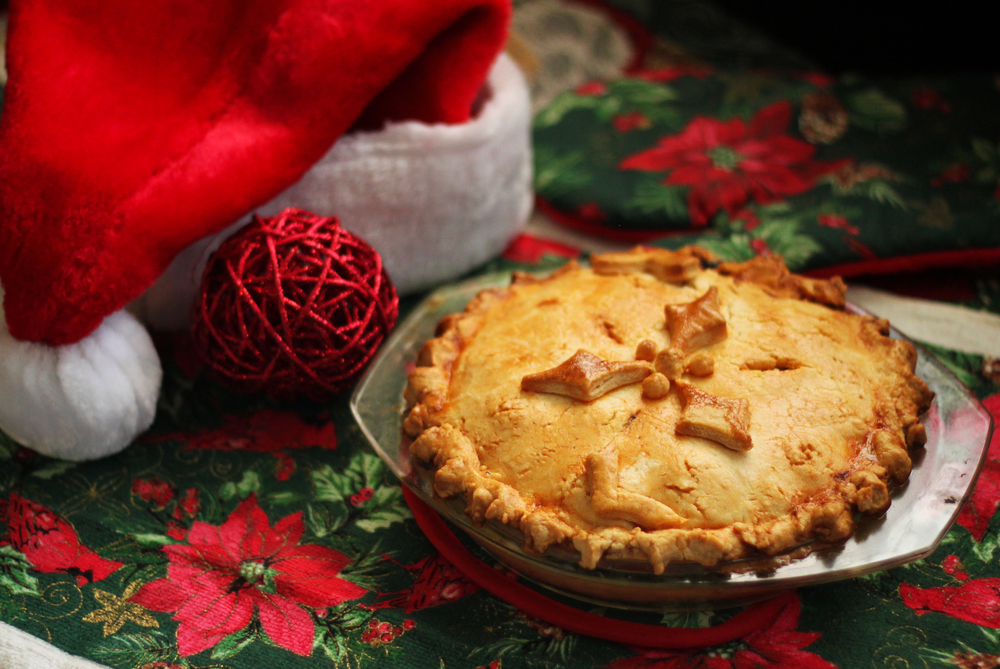
Outsider version: “tour-TEE-air”
Local pronunciation: “tor-tyair.”
Tourtière, a traditional Québec meat pie, often tangles tongues because of its French spelling. Visitors frequently emphasize each syllable as if reading textbook French, resulting in overly theatrical pronunciations. Locals, however, blend the sounds smoothly: “tor-tyair,” with the middle “t” slightly softened. The dish itself carries regional variations — Saguenay–Lac-Saint-Jean’s version differs from Montréal’s — but the pronunciation stays consistent. Saying it correctly shows familiarity not only with Québec cuisine but also with the linguistic nuances that define Francophone food culture. It’s a subtle detail that makes a noticeable difference when talking to someone who grew up eating tourtière during the holidays.
Nanaimo Bar
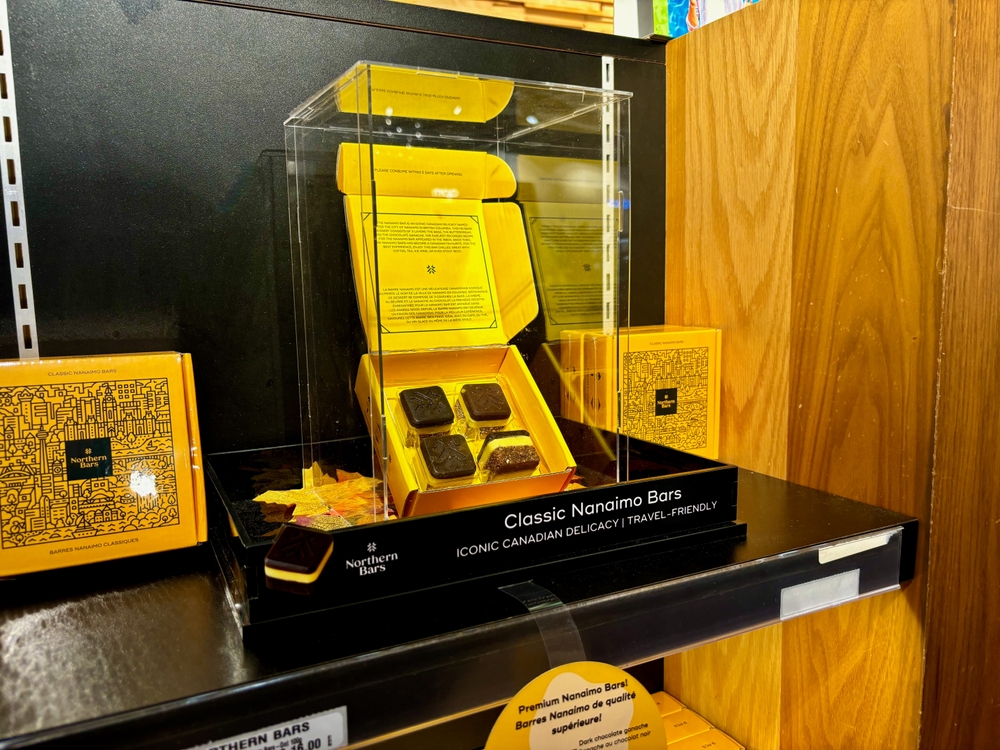
Outsider version: “nah-NAY-mo”
Local pronunciation: “nuh-NYE-mo.”
Nanaimo bars, a beloved no-bake dessert from British Columbia, are easier to eat than pronounce. Outsiders often misplace the stress or stretch the vowels, turning the name into something lyrical rather than the straightforward “nuh-NYE-mo” used locally. The correct pronunciation mirrors the city of Nanaimo, from which the dessert originates. Locals take quiet pride in hearing their name pronounced correctly, because it shows recognition of Vancouver Island’s culinary and cultural contributions. While the recipe has travelled far beyond B.C., the pronunciation remains firmly rooted. Getting it wrong won’t stop anyone from offering you a square, but getting it right earns warm smiles.
Saskatoon Berry
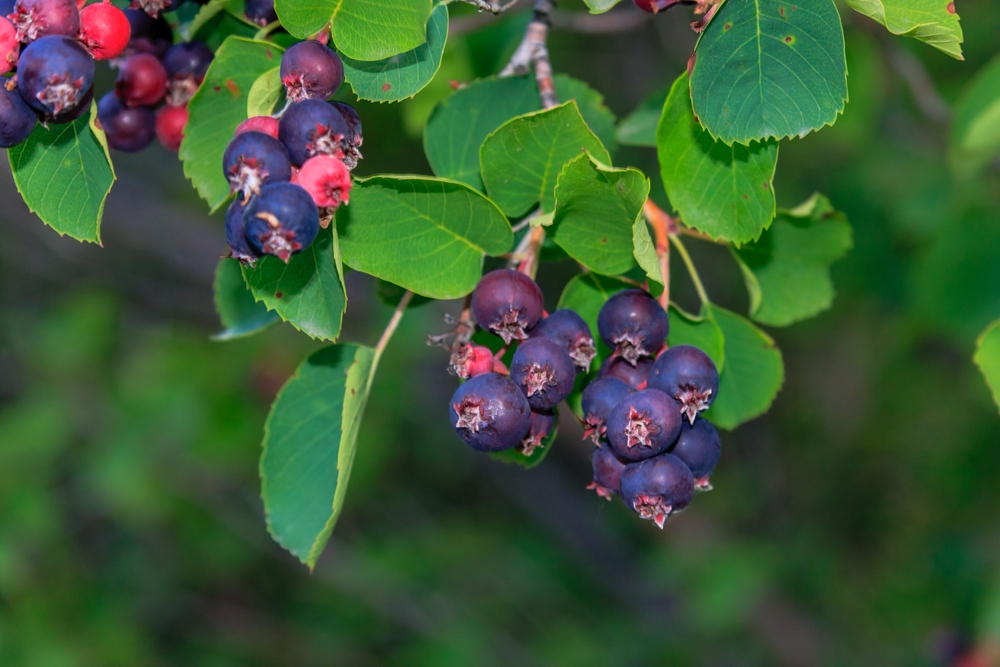
Outsider version: “SASS-kuh-toon” (with the first syllable too sharp)
Local pronunciation: “sas-ka-TOON.”
The name “Saskatoon” comes from the Cree word misâskwatômina, which refers to the berry itself. Outsiders often emphasize the first syllable too strongly or compress the middle sounds. Locals follow a smoother rhythm, with the stress placed on “toon.” Pronouncing it correctly honours its Indigenous roots and the prairie culture surrounding it. Saskatoon berries appear in pies, jams, spirits, and summer markets, and the name carries both linguistic history and regional pride. When visitors soften the opening syllable and maintain the natural flow, locals instantly recognize the effort — and often reward it with recipe recommendations.
Beavertails

Outsider version: “BEE-ver tails” (spoken too literally)
Local pronunciation: “Beev-ur-tails.”
Beavertails may look straightforward, but outsiders often pronounce them with stiff separation between words, as if saying the name of an actual animal appendage. Locals treat the brand name as a single smooth term: “Beev-ur-tails.” The treat—fried dough stretched into a tail shape—originated in Ontario and became a national favourite. Its pronunciation isn’t about linguistic complexity but about rhythm. Saying it as one continuous word reflects how people talk about foods that feel familiar, comforting, and tied to childhood memories. Outsiders who over-enunciate unintentionally signal unfamiliarity; blending the words sounds more authentically Canadian.
Bannock
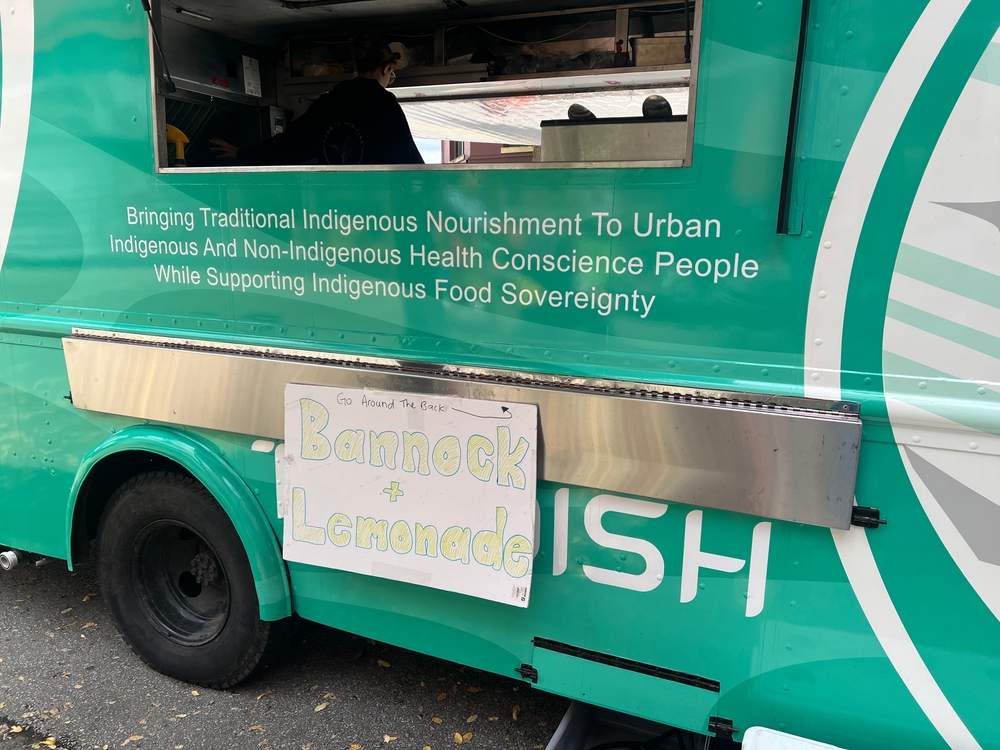
Outsider version: “BAN-nock” (sharp emphasis)
Local pronunciation: “BAN-ick.”
Bannock, a staple in many Indigenous communities, is often mispronounced by outsiders who add an unnecessary “nock” to the ending. Locals and those familiar with the dish use a softer, quicker “ick” sound. Because bannock has deep cultural significance, pronouncing it respectfully is important. It represents both historical survival and contemporary tradition, appearing at gatherings, powwows, and community feasts. Whether baked, fried, or open-fire roasted, bannock carries stories and identity. Using the correct pronunciation shows awareness of the communities that have made the dish part of daily and ceremonial life for generations.
Montréal Bagel (Bagel itself)
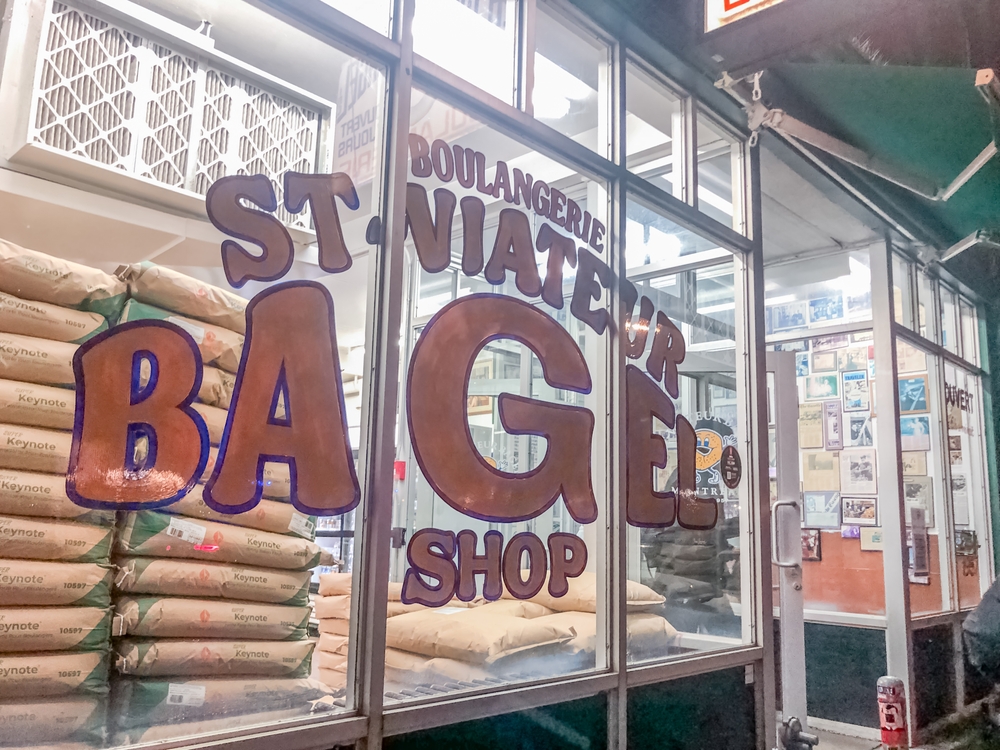
Outsider version: “BAY-gull”
Local pronunciation: “BAY-gel.”
Yes — even the word “bagel” sparkles with regional identity. In Montréal, locals subtly shift the ending to sound more like “gel” than “gull.” Outsiders often pronounce it the New York way, elongating the final syllable. Montréalers are particular about their bagels — their wood-fired sweetness, sesame-crusted texture, and cultural pride — so the pronunciation matters. Saying “BAY-gel” aligns you with local rhythm, especially when ordering at Fairmount or St-Viateur. The difference is small but meaningful, and locals instantly hear when someone isn’t from around the neighbourhood.
Ketchup Chips
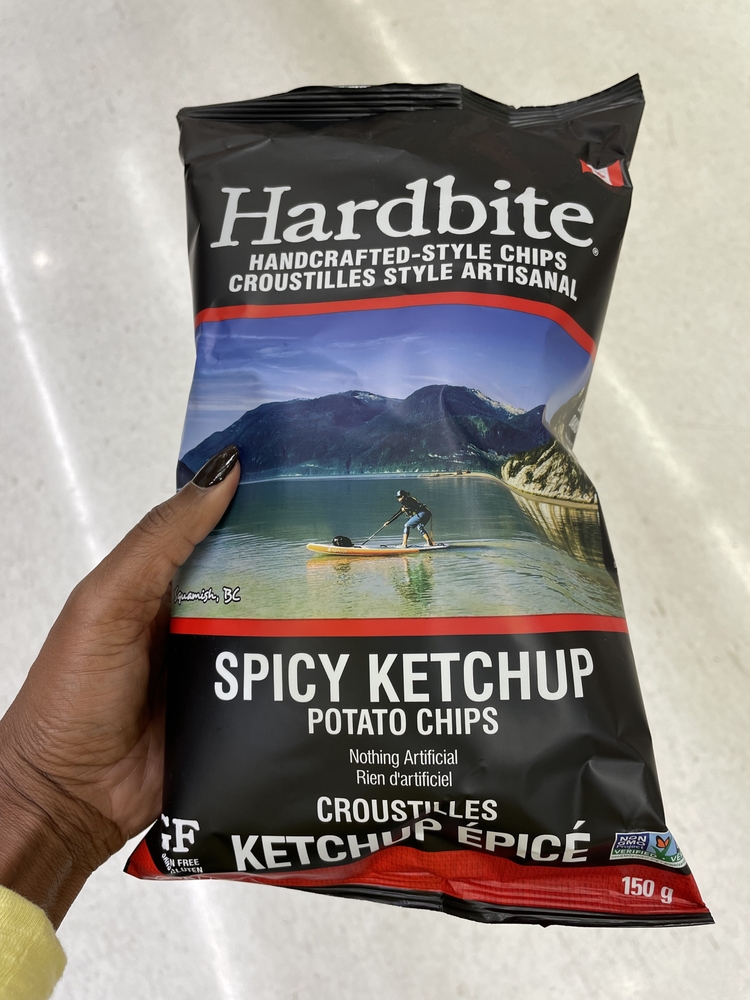
Outsider version: “KETCH-up chips” (overemphasizing “ketch”)
Local pronunciation: “ket-chup chips.”
The pronunciation differences are subtle but telling. Outsiders often punch the first syllable too hard, while locals soften it slightly and speak the phrase quickly as one unit. Ketchup chips are deeply Canadian — a flavour many visitors are sceptical of until they try it. The pronunciation reflects how casually Canadians reference them, especially at gas stations, cottages, and late-night convenience store runs. Saying it smoothly, without dramatic emphasis, matches how the snack fits into everyday Canadian culture: familiar, unmistakable, and often eaten straight from the bag on road trips.
Rappie Pie (Acadian Dish)

Outsider version: “RAP-pee pie” (hard “rap”)
Local pronunciation: “RAH-pee pie.”
Rappie pie, a beloved Acadian dish from Nova Scotia and New Brunswick, confuses outsiders because its spelling tempts them into a sharp “rap” sound. Locals use a softer “rah,” giving the dish a warmer, more natural flow. Made from grated potatoes cooked with broth and meat, rappie pie carries centuries of Acadian heritage. Getting the pronunciation right is seen as a sign of respect for the culture, especially in regions where the dish appears at family gatherings and holiday tables. Outsiders who adopt the correct softer sound often find themselves welcomed more warmly into conversations about Acadian food traditions.
Peameal Bacon
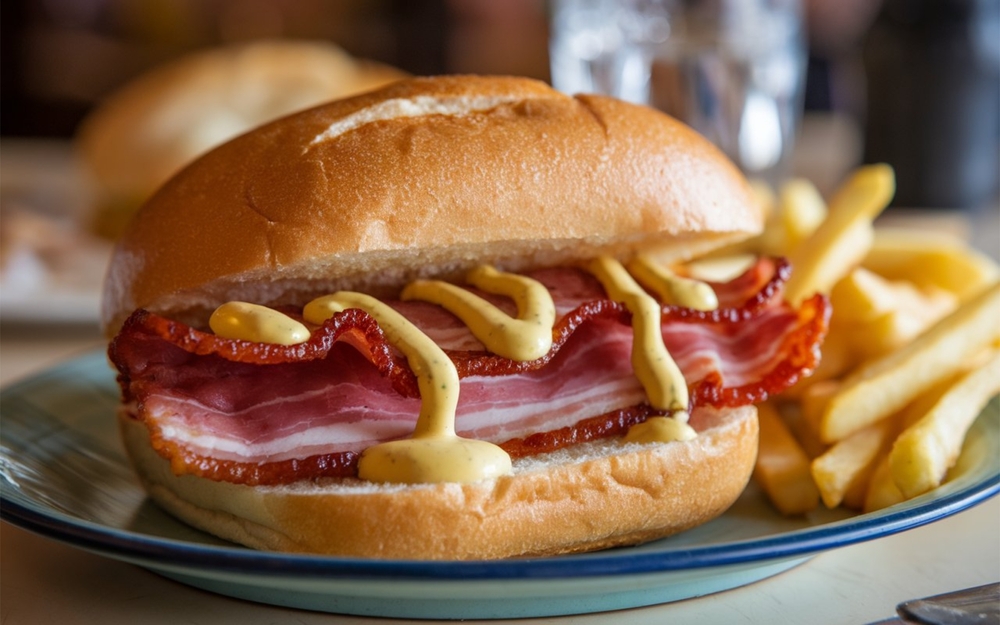
Outsider version: “PEE-meel bacon”
Local pronunciation: “pee-meal bacon.” (quick, smooth, no exaggerated emphasis)
Peameal bacon is a Toronto-born classic, yet visitors often over-enunciate the first syllable or stretch the second, turning the name into something far more dramatic than locals ever intended. The word “peameal” comes from the historic practice of rolling cured pork loin in ground yellow peas — later replaced with cornmeal — and locals pronounce it as one seamless phrase. Torontonians say it quickly, as if referencing something deeply familiar. The pronunciation matters because peameal bacon isn’t just a breakfast item; it’s a cultural staple associated with St. Lawrence Market and iconic weekend sandwiches.
Labrador Tea

Outsider version: “LAB-ruh-door tea”
Local pronunciation: “LAB-ra-dur tea.”
Labrador Tea is an Indigenous-rooted herbal drink found across the North and in pockets of the boreal forest. Outsiders often pronounce “Labrador” as if reading from a geography textbook, stretching the syllables and stressing the middle. Locals — especially in northern communities — say it with a softer, quicker cadence: “LAB-ra-dur.” Because the plant has deep cultural, medicinal, and historical significance, the pronunciation reflects familiarity and respect. The tea itself carries earthy, resinous notes and appears in both traditional and contemporary recipes.
Saskatoon Pie
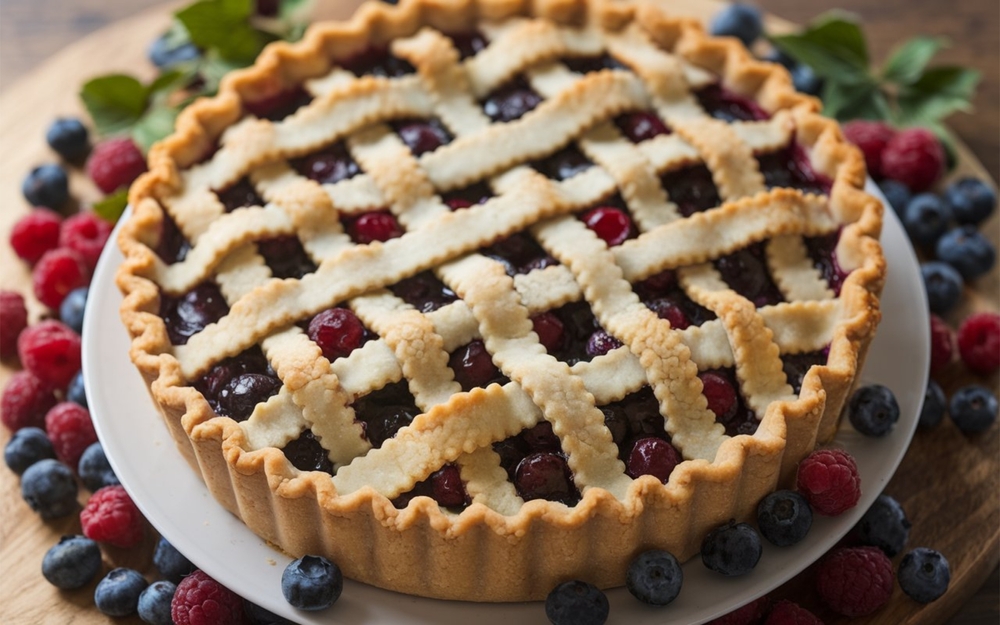
Outsider version: “SASS-kuh-toon pie” (same mispronunciation as the berry itself)
Local pronunciation: “sas-ka-TOON pie.”
Just like the berry, the pie inherits the same common mispronunciation. Visitors often overemphasize the first syllable, making it sound harsher than locals ever say it. Prairies residents use a smoother flow, letting the emphasis fall naturally on “toon.” The pie is iconic across Saskatchewan — sweet, purple, and deeply tied to summer gatherings. Using the correct pronunciation connects you instantly to the region’s food culture. When visitors say it right, they often get stories from locals about berry-picking traditions, family recipes, or the best bakeries in town. The name isn’t complicated, but it carries the rhythm of the Prairies.
Shish Taouk (Popular in Montréal)
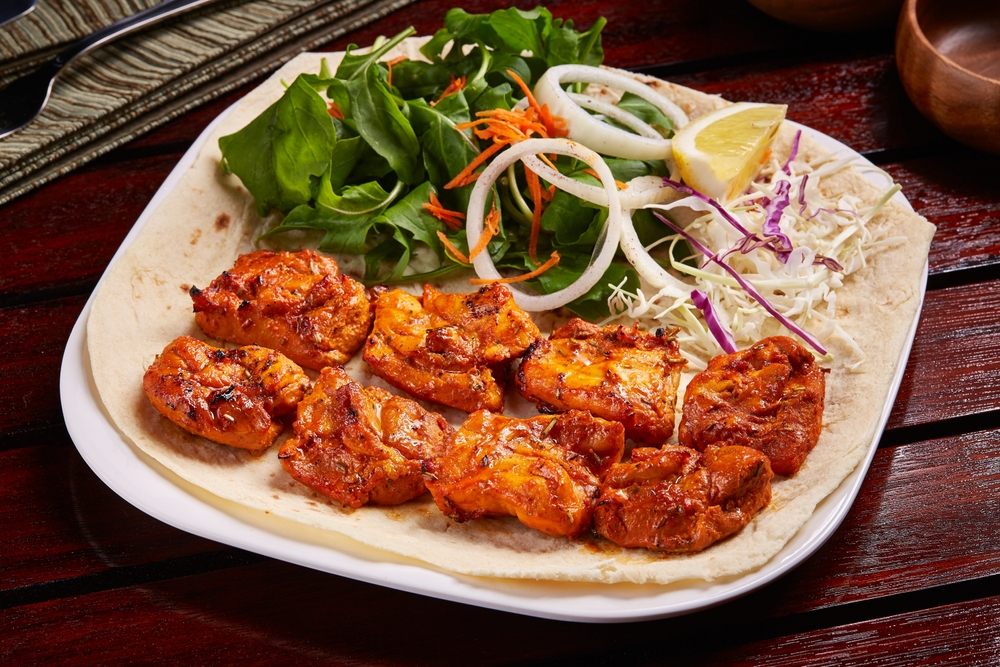
Outsider version: “shish ta-OOK”
Local pronunciation: “shish ta-WOOK.”
Shish taouk, a staple in Montréal’s vibrant Lebanese food scene, is frequently mispronounced by outsiders drawn to the city’s famous rotisserie wraps. Many lean into a hard “ook,” but locals say “ta-WOOK,” reflecting the Lebanese pronunciation widely adopted across Montréal’s restaurants. Because the dish is a point of pride within the city’s Middle Eastern culinary identity, saying it correctly signals respect for the community that made it iconic. You’ll hear the right version at late-night counters, mall food courts, and beloved neighbourhood spots that have turned shish taouk into a Montréal classic.
Maple Taffy (Tire d’érable)
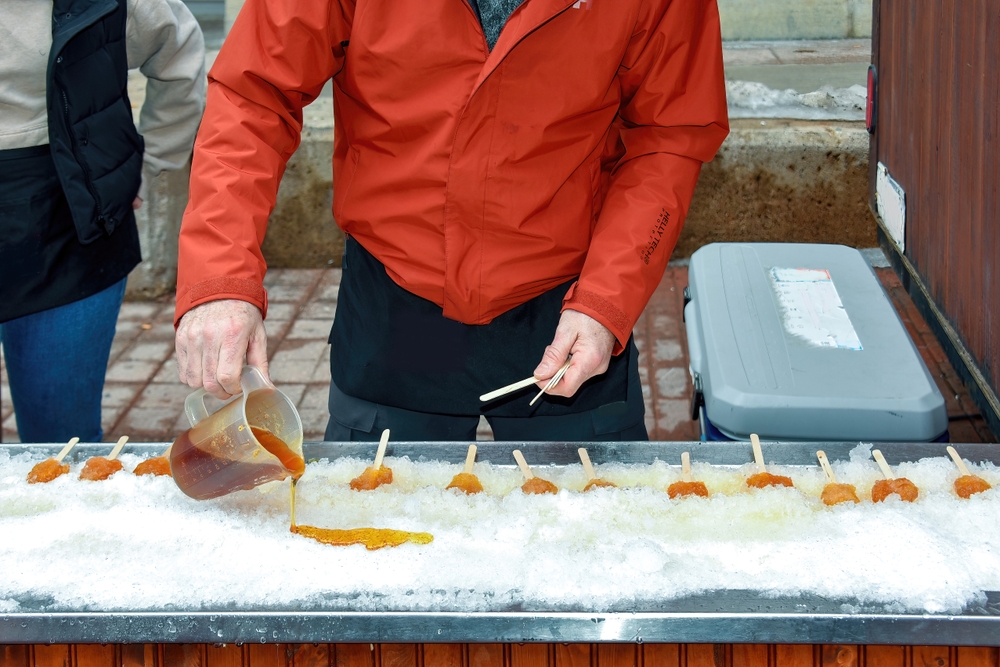
Outsider version: “teer day-RAH-bull”
Local pronunciation: “teer day-RAH-bluh.”
Maple taffy — or tire d’érable — is a Québec sugar-season treasure. Outsiders often stumble over the French, flattening the vowels or pronouncing érable with harsh English consonants. Locals soften the ending, blending the syllables with an almost musical flow. The term literally means “maple pull,” referencing how hot syrup is poured onto snow and lifted with a popsicle stick. Pronouncing it correctly shows appreciation for one of Québec’s most cherished traditions. For many locals, tire d’érable isn’t just a treat — it’s a sensory memory tied to sugar shacks and spring thaw.
Toutons (Newfoundland)

Outsider version: “too-TAHNS”
Local pronunciation: “TOU-tins.”
Toutons, Newfoundland’s beloved fried bread dough, often confuses visitors who try to over-French the word. Locals say it casually, almost quickly: “TOU-tins.” The dish is simple but deeply comforting — fried dough served with molasses or butter. The pronunciation reflects Newfoundland’s unique linguistic blend, shaped by Irish, English, and local dialect influences. Saying it correctly earns instant approval because it shows genuine engagement with the province’s food traditions. Getting it wrong marks you immediately as a come-from-away.
Cretons

Outsider version: “cree-TAHNS”
Local pronunciation: “kruh-TAWN.”
Cretons, a Québec pork spread commonly eaten on toast for breakfast, is one of the most frequently mispronounced foods by visitors. Outsiders often say it with an English “cree” or a harsh “tans.” Locals smooth it out to “kruh-TAWN,” letting the sounds roll comfortably. The dish is humble yet iconic, found in grocery stores, diners, and family tables across Québec. The correct pronunciation demonstrates respect for the province’s culinary staples, not just its renowned dishes. Cretons may be simple, but it has cultural weight — and so does pronouncing them properly.
Flipper Pie (Newfoundland)
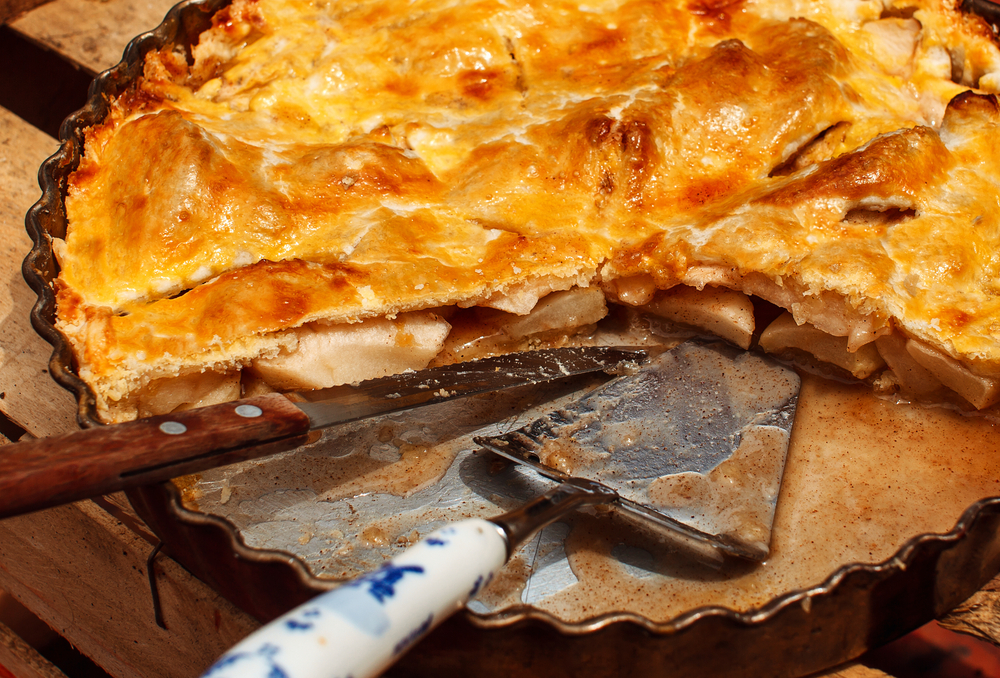
Outsider version: “FLIP-per pie” (literal pronunciation)
Local pronunciation: “FLIP-pa pie.”
Flipper pie, made from seal flippers, carries a deep cultural connection to Newfoundland’s coastal heritage. Outsiders often pronounce it stiffly, enunciating “per” sharply. Locals soften the ending to “pa,” giving the name a familiar, homey sound — “FLIP-pa pie.” The dish appears primarily in rural areas and during specific seasons, and its pronunciation reflects local dialect patterns. Understanding how to say it correctly helps contextualize the food within Newfoundland’s long-standing maritime traditions. Even visitors who don’t try it earn respect simply by saying the name properly.
Bagna Cauda (Italian-Canadian Communities)
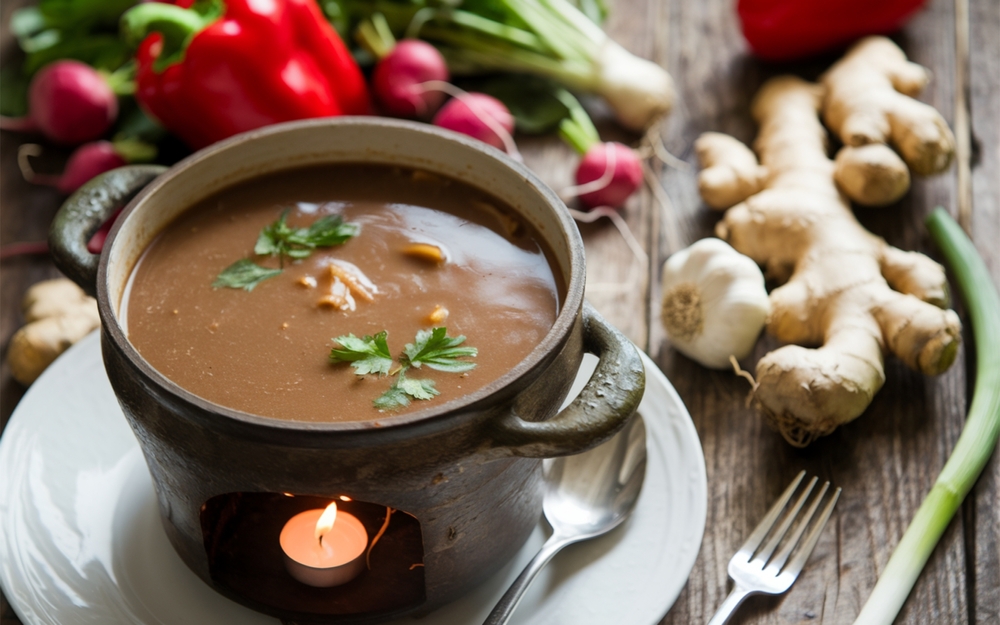
Outsider version: “BAG-nah cow-da”
Local pronunciation: “BON-ya COW-da.”
Bagna cauda, a warm anchovy-garlic dip popular in Italian-Canadian households, often gets mispronounced because English speakers lean into the literal spelling. In communities across Ontario and parts of Québec, the pronunciation follows northern Italian roots: “BON-ya COW-da.” The dish is often served during holiday gatherings, communal dinners, and family celebrations. Saying it correctly signals familiarity with Italian-Canadian food traditions, many of which helped shape Canada’s postwar culinary landscape. The pronunciation matters because it connects directly to heritage, community identity, and the warmth of family kitchens.
21 Products Canadians Should Stockpile Before Tariffs Hit

If trade tensions escalate between Canada and the U.S., everyday essentials can suddenly disappear or skyrocket in price. Products like pantry basics and tech must-haves that depend on are deeply tied to cross-border supply chains and are likely to face various kinds of disruptions
21 Products Canadians Should Stockpile Before Tariffs Hit
